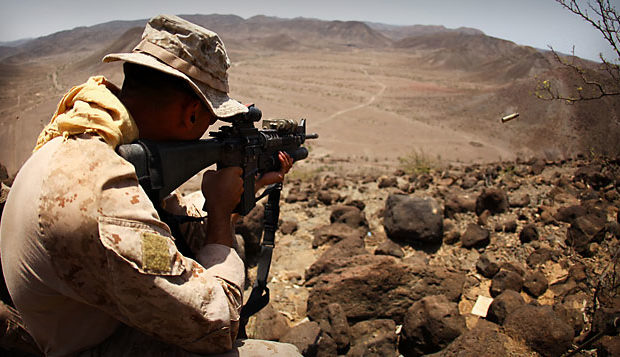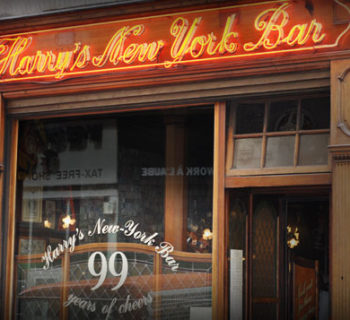MAN OF ACTION -- Ever since September 11, 2001 many civilians as well as military and government members have found themselves going through more and more unique survival training. This type of training prepares the individual to escape situations that they may find themselves in in urban and non-urban environments. These are called High Threat Protection training or HTP’s. Much of this training involves preparing for situations before they occur if possible. B they were embedded with the military many journalists went through such training in case they’re separated from their security detail. The difference is they are not armed. As often the case the quality of high stress threat environment training depends on the organization that provides the training as well as the amount of time the individual is allowed.
The scenario I’ll walk you through is a standard HTP scenario, and it will cover single individual as well as a team of two. The important thing to remember is that although this form of training is very involved, the situation that you may find yourself in can be very unpredictable, scary, and fast pace. In high threat environments your enemy knows the area and their capabilities better than you and of course this depends on the region of the world you’re in. As an example, Russia and former Eastern Block countries had security service members that follow individuals on a moment by moment basis, however other countries such as Latin America and the Middle East have organized groups that control certain areas so they already know when foreigners have arrived and what their plans are, as well as who they work for. Let’s start with a Latin American or Middle Eastern situation.
Let’s begin. For this scenario we will say that you were provided a car from the consulate or embassy. Many times this vehicle will be either a large sedan or a pick up truck similar to a Toyota Land Cruiser. These vehicles are seen all over the world and are very common among indigenous people as well as those working in these countries from NGO’s or government agencies. If for some reason you know that there is a high probability that you and your partner could be stopped at either a checkpoint or indiscriminately while traveling through a small town on your way to your extraction point, you have a few options to up-armor your vehicle that could buy you time or save your life during an escape.
Preparing Your Vehicle
Many times you will have what is called body armor issued to you in High Threat Environments. This is similar to a vest jacket that covers your vital organs as well as your spine. The Achilles’ heel to body armor, unless you specifically purchase a specialized protective vest, are the sides which are exposed as the driver his or her hands on the steering wheel. So we need to prepare the vehicle with materials we have around us.
One option if you’re able to find a place to work on your vehicle for at least 30 minutes to an hour is simple. Remove any impeding doorframe cover from the top of your door, at the base of the window. If you’re able to find some form of digging tools such as a shovel dig deep until you find moist soil. Sand will simply pour through the door and not allow much protection as you drive. However, soil has enough dampness to keep the dirt compacted together in the doorframe. Fill and pack both the driver and passenger doors as best as you can while trying to keep the bottom of the door sealed in any way to prevent the loss of the dirt. You are, in simple terms, making a sand bag in the shape of a door.
The Weapons You May Come Against
The most common assault rifle in the world is a Kalashnikov or AK-47 which fires a 7.62 caliber round. This is an accurate and very deadly munition. What you are trying to do is divert or slow the energy of the round as much as possible either away from you, to your side or below you. A 7.62 round will cut through a normal door, on a continuous path or while tumbling through to the passengers door. You need to divert its energy. Vehicle movement also helps, the forward moving vehicle also will deflect the energy of a straight shot. Another very effective form of improvised armor for your vehicle is duct tape phonebooks or any thick bound material. If you’re only able to find clothing lay it flat as though you’re packing it folded in half and then half again on itself and begin to roll it tightly and then bind it in rolls with duct tape. Perform this over and over again until you’re able to create the dimensions large enough to cover the inside of your door panel.
For each separate section tightly roll duct tape as though you were creating separate logs for a raft. Then put each row together and cover all of the rolls tightly with bound duct tape to make one semisolid mat. The better option, is to use phonebooks bound tightly in duct tape. I have seen phonebooks that are properly prepared along a door panel absorb a 9 mm round when shot through the door. The standard AR or automatic rifle fires a 5.56 round. This round can also be stopped if fired through a moving vehicle door, into the packed soil and ending in the duct taped bundle. Of course this depends on the distance from the shot to the door. The windows on both the drivers side and passenger side break instantly on impact, this is a safety measure to allow emergency responders to enter a vehicle that has been in an accident and the passengers need to be removed. The front and rear glass is non shattering glass meant to keep shards of glass from causing grave damage in case of an accident. If for some reason you are shooting from the front seat, the trajectory of the bullet will change significantly due to the curvature of the window.
If someone is directly in front of you with a weapon, let’s say 20 feet away you will need to shoot lower then a direct shot on the target. You are attempting to compensate for the angle of the glass and redirect the round upward. This inevitably will be what is called “effective fire”. This means that it is intended to make the individual in front of you move, duck or miss his shot. Trust me when I say that firing accurately form a moving vehicle is very hard without the obstruction of non-shattering glass.
Defeating and Navigating a Minimally Protected Checkpoint
If you were not being pursued and you come upon a checkpoint the best advice is to act as natural as you can muster while you slow the vehicle before the checkpoint stop. If you are in a manual vehicle the driver will shift the vehicle into a lower gear, such as 2nd or 3rd gear approximately 15 feet before the actual stop. Make sure to remain calm and do not display any form of agitation if possible. Just before you come to the check point stop, be it a another vehicle, 50 gallon drums, or an improvised gate push the brakes enough to cause your vehicle to dip down under the weight of the engine. The second you do this gun your engine which will cause the opposite effect of raising the front of the car as high as possible. This momentum will bring the front of The car high enough to engage with the rear of a blocking car causing it to spin as if on an axis far enough to allow you to pass quickly. Do not attempt this with the front of a checkpoint vehicle as the weight of the engine will negate the energy of your vehicle bring you to a stop. The breaking also gives the security at the checkpoint a sense of control as well as comfort that you are complying. This will buy you 2 to 3 seconds before they can react. These 2 to 3 seconds can save your life, but the action of defeating this checkpoint requires calm, preparation and commitment.
Exiting a Downed the Vehicle
This portion of the scenario involves being stuck either in traffic or with a down vehicle that will not get you to your extraction point. Depending on which side of the vehicle you may come in contact with gunfire the driver or the passenger will have to return fire while declaring “contact right!” or “contact left!”. We will assume for the scenario that the gunfire is coming from the passenger side. In this situation the passenger will return fire allowing the driver to exit the vehicle and move to the rear of the vehicle. A very important point of returning gunfire while covering your partner while they are moving is to make the spread of gun shots sporadic. This allows an unpredictable stream of fire which will keep your enemy unsure of when to show themselves and return fire. After the driver comes to the rear of the vehicle he or she will begin to engage the enemy, while yelling “ready!” for the passenger to know to prepare to move, and then followed with the command “move!” This gives the passenger the chance to remove any obstacles near them unhook your safety belt or simply slide across the seat while taking cover to exit the vehicle.
Once the passenger has exited the vehicle he or she will move to the front of the vehicle keeping your body concealed as best they can with the tires at their feet. The engine, axel and wheels provide terrific protection from the enemy but the passenger will have to cover the driver using the same commands of “ready!” and “move!” to allow the driver to run, while under cover fire. The driver will take a second to assess the next best protected area to move to, this could be a building or anything that provides cover. The process of Covering and moving will continue until both you and your passenger have found shelter. Bear in mind that this could also mean “acquiring” another vehicle that could already have passengers in it.
Making It Out Alive
The purpose all of these forms of High Threat Protection and threat environment training simply to give you the tools and understandings to get out of the situation alive. Every situation is different and cannot be thoroughly prepared for, but knowing ways of understanding the situation and preparing for the worst can save your life as well as your partner. Remember, movement is key. Move, move, move! Static positions are great ways to die in the field. Also knowing what you have around you that can aid in an escape is key. Changing your appearance, changing vehicles, changing direction are all keys to survival. The point is to never stop and engage the enemy; your only plan is escape and live to die another day.
Regards,
Marcos Sean










Top 5 Rejected James Bond Theme Songs
Top 5 Rejected James Bond Theme Songs
The "No Time To Die" Review